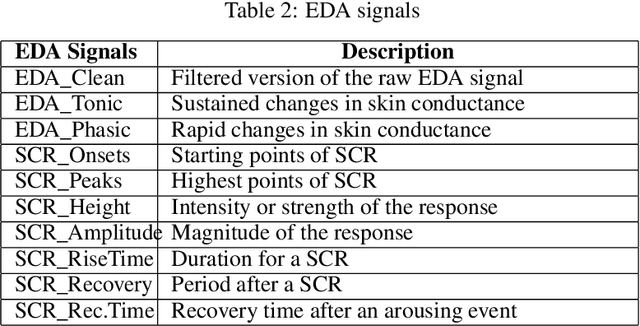Multimodal Stress Detection Using Facial Landmarks and Biometric Signals
Paper and Code
Nov 06, 2023



The development of various sensing technologies is improving measurements of stress and the well-being of individuals. Although progress has been made with single signal modalities like wearables and facial emotion recognition, integrating multiple modalities provides a more comprehensive understanding of stress, given that stress manifests differently across different people. Multi-modal learning aims to capitalize on the strength of each modality rather than relying on a single signal. Given the complexity of processing and integrating high-dimensional data from limited subjects, more research is needed. Numerous research efforts have been focused on fusing stress and emotion signals at an early stage, e.g., feature-level fusion using basic machine learning methods and 1D-CNN Methods. This paper proposes a multi-modal learning approach for stress detection that integrates facial landmarks and biometric signals. We test this multi-modal integration with various early-fusion and late-fusion techniques to integrate the 1D-CNN model from biometric signals and 2-D CNN using facial landmarks. We evaluate these architectures using a rigorous test of models' generalizability using the leave-one-subject-out mechanism, i.e., all samples related to a single subject are left out to train the model. Our findings show that late-fusion achieved 94.39\% accuracy, and early-fusion surpassed it with a 98.38\% accuracy rate. This research contributes valuable insights into enhancing stress detection through a multi-modal approach. The proposed research offers important knowledge in improving stress detection using a multi-modal approach.
 Add to Chrome
Add to Chrome Add to Firefox
Add to Firefox Add to Edge
Add to Edge